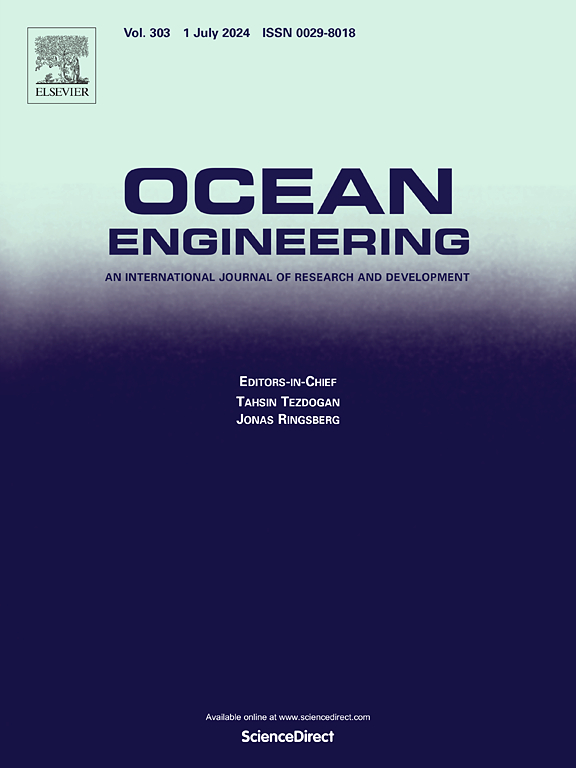Numerical simulation of cohesive bed impinging by submerged pulsed and continuous waterjet based on SPH algorithm
IF 4.6
2区 工程技术
Q1 ENGINEERING, CIVIL
引用次数: 0
Abstract
Accurate pulsed and continuous waterjet process modeling is crucial for enhancing vertical jet efficiency in marine structure installation and dredging projects. In this paper, the numerical model of the scouring process is established using the smoothed particle hydrodynamics (SPH). Firstly, the experimental data of pulsed jet scouring the cohesive bed confirms the model's accuracy. In addition, a comparative analysis between pulsed and continuous waterjet scouring mechanisms is conducted, along with an investigation into factors influencing scour hole size and efficiency. The results show that the shape of the scour hole obtained by simulation and experiment is gourd-shaped, and the average error of the scour hole depth is 4.1 %, which verifies the accuracy of the numerical model. The scouring mechanism can be regarded as vertical crack generation, development, and disappearance, transitioning from shear failure to erosion dominance. Furthermore, the jet angle has a significant impact on both the scour hole size and the efficiency ratio. At an optimal injection angle of 30°, the efficiency ratio can reach up to 124.4%. This study addresses the gap in comparative analysis between pulsed and continuous waterjet scouring mechanisms and holds promising applications in engineering, including dredging and anchor extraction from sediments.
基于 SPH 算法的浸没式脉冲水刀和连续水刀冲击粘性床的数值模拟
精确的脉冲和连续水刀过程建模对于提高海洋结构安装和疏浚工程中的垂直喷射效率至关重要。本文利用平滑粒子流体力学(SPH)建立了冲刷过程的数值模型。首先,脉冲射流冲刷粘性床面的实验数据证实了模型的准确性。此外,还对脉冲水射流和连续水射流的冲刷机制进行了比较分析,并对影响冲刷孔大小和效率的因素进行了研究。结果表明,模拟和实验得到的冲刷孔形状均为葫芦形,冲刷孔深度的平均误差为 4.1%,验证了数值模型的准确性。冲刷机理可视为垂直裂缝的产生、发展和消失,从剪切破坏过渡到侵蚀主导。此外,喷射角对冲蚀孔尺寸和效率比都有显著影响。最佳喷射角为 30°,效率比可达 124.4%。这项研究填补了脉冲水刀和连续水刀冲刷机制对比分析的空白,在工程领域(包括疏浚和从沉积物中提取锚)具有广阔的应用前景。
本文章由计算机程序翻译,如有差异,请以英文原文为准。
求助全文
约1分钟内获得全文
求助全文
来源期刊

Ocean Engineering
工程技术-工程:大洋
CiteScore
7.30
自引率
34.00%
发文量
2379
审稿时长
8.1 months
期刊介绍:
Ocean Engineering provides a medium for the publication of original research and development work in the field of ocean engineering. Ocean Engineering seeks papers in the following topics.
 求助内容:
求助内容: 应助结果提醒方式:
应助结果提醒方式:


